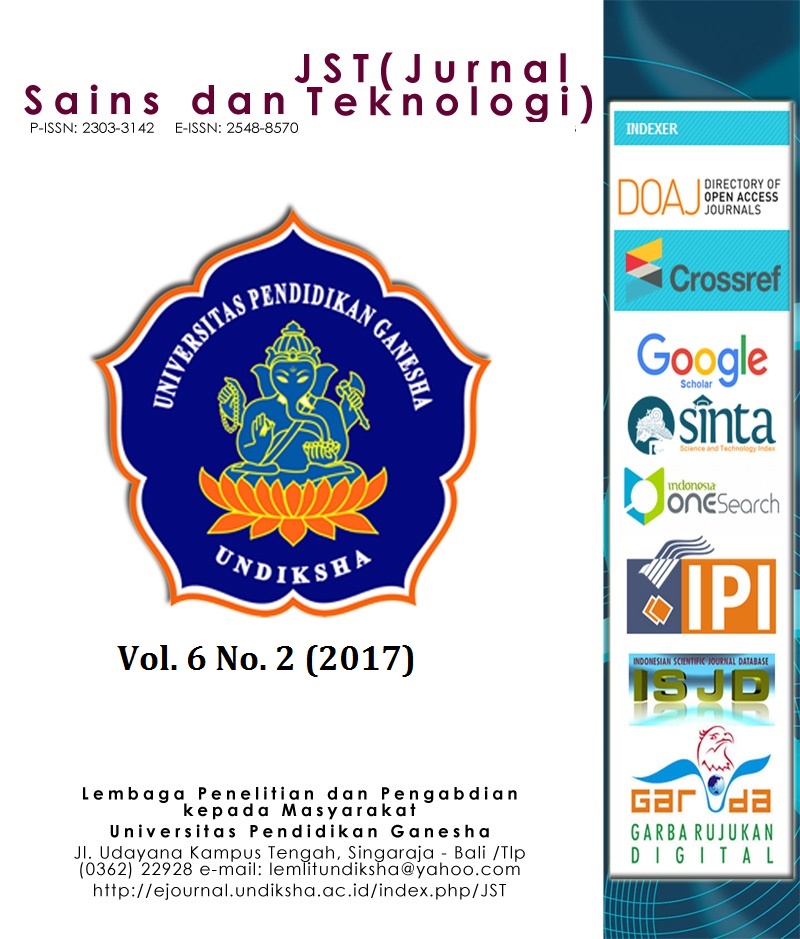ANALISIS PROKSIMAT PADA PELET BAHAN BAKAR DARI KOTORAN BABI YANG DIKOMBINASIKAN DENGAN LIMBAH KAYU
DOI:
https://doi.org/10.23887/jstundiksha.v6i2.10613Keywords:
pelet bahan bakar, kotoran babi, limbah kayu, proksimatAbstract
Penelitian ini bertujuan untuk mengetahui karakteristik data analisis proksimat (kadar air, Ash/kadar abu, Volatile Matter (VM), Fixed Carbon (FC)). Subyek penelitian ini adalah kotoran babi dan limbah kayu sedangkan obyek penelitian ini adalah kualitas pelet variasi kombinasi kotoran babi dan limbah kayu. Pelet (P) dibuat dengan berbagai perbandingan antara kotoran babi (KB) dan limbah kayu (LK), 10:90 (P1); 20:80 (P2); 30:70 (P3); 40:60 (P4); 50:50 (P5). Data analisis proksimat diukur dengan Thermogravimetric Analyzer (TGA) 701 merk LECO. Hasil penelitian menunjukkan bahwa : bahan baku pelet kotoran babi (100%) memiliki kadar air (13,20%), ash (16,9%), VM (50,43%) dan FC (19,47%). Limbah kayu (100%) memiliki kadar air (13,26%), ash (1,19%), VM (84,18%) dan FC(1,37%). Pelet dengan kadar air tertinggi terdapat pada P1 yaitu 13,28%. Pelet dengan nilai kadar ash tertinggi adalah P5 yaitu 9,19%. Pelet dengan kadar VM tertinggi adalah P1 yaitu 80,38%. Pelet dengan kadar FC tertinggi adalah P5 yaitu 10,32%.
Downloads
Published
How to Cite
Issue
Section
License
Authors who publish with the Jurnal Sains dan Teknologi (JST) agree to the following terms:
- Authors retain copyright and grant the journal the right of first publication with the work simultaneously licensed under a Creative Commons Attribution License (CC BY-SA 4.0) that allows others to share the work with an acknowledgment of the work's authorship and initial publication in this journal.
- Authors are able to enter into separate, additional contractual arrangements for the non-exclusive distribution of the journal's published version of the work (e.g., post it to an institutional repository or publish it in a book), with an acknowledgment of its initial publication in this journal.
- Authors are permitted and encouraged to post their work online (e.g., in institutional repositories or on their website) prior to and during the submission process, as it can lead to productive exchanges, as well as earlier and greater citation of published work. (See The Effect of Open Access)
















